Abstract
Beck, Jay V. (Brigham Young University, Provo, Utah), and Fred M. Shafia. Effect of phosphate ion and 2,4-dinitrophenol on the activity of cell suspensions of Thiobacillus ferrooxidans. J. Bacteriol. 88:850–857. 1964.—The rate of oxidation of ferrous salts or elemental sulfur by aged cell suspensions, phosphate-depleted cells, or 2,4-dinitrophenol (DNP)-treated cells of Thiobacillus ferrooxidans was increased by addition of orthophosphate salts. The effect was found to be transitory, with the rate gradually approaching that observed prior to phosphate ion addition. The total increased oxygen uptake was observed to be roughly proportional to the amount of phosphate salt added. The efficiency of CO2 fixation accompanying oxidation of ferrous salts was found to be about 1.7 μmoles of CO2 fixed per 100 μmoles of O2 absorbed, in contrast to a value of about 8.0 μmoles of CO2 fixed per 100 μmoles of O2 uptake during sulfur oxidation. The rate of oxidation did not affect the CO2 fixation efficiency. Whereas addition of phosphate salts to aged or phosphate-depleted cells increased slightly the already high efficiency of CO2 fixation, it did not affect the complete inhibition of CO2 fixation observed in the presence of 10-5m DNP. The results indicate that the phosphate ion is essential for oxidation of the ferrous ion, and that dinitrophenol and other so-called upcoupling agents interfere with phosphate metabolism. The latter may be a result of action at the site of assimilation of the ferrous ion or it may be an effect on the electron-transport system. In any event, it seems obvious that the phosphate ion is converted into a nonactive form in the presence of dinitrophenol-treated cells, because additional quantities of orthophosphate salts cause an immediate, marked restoration of oxidative activity.
Full text
PDF
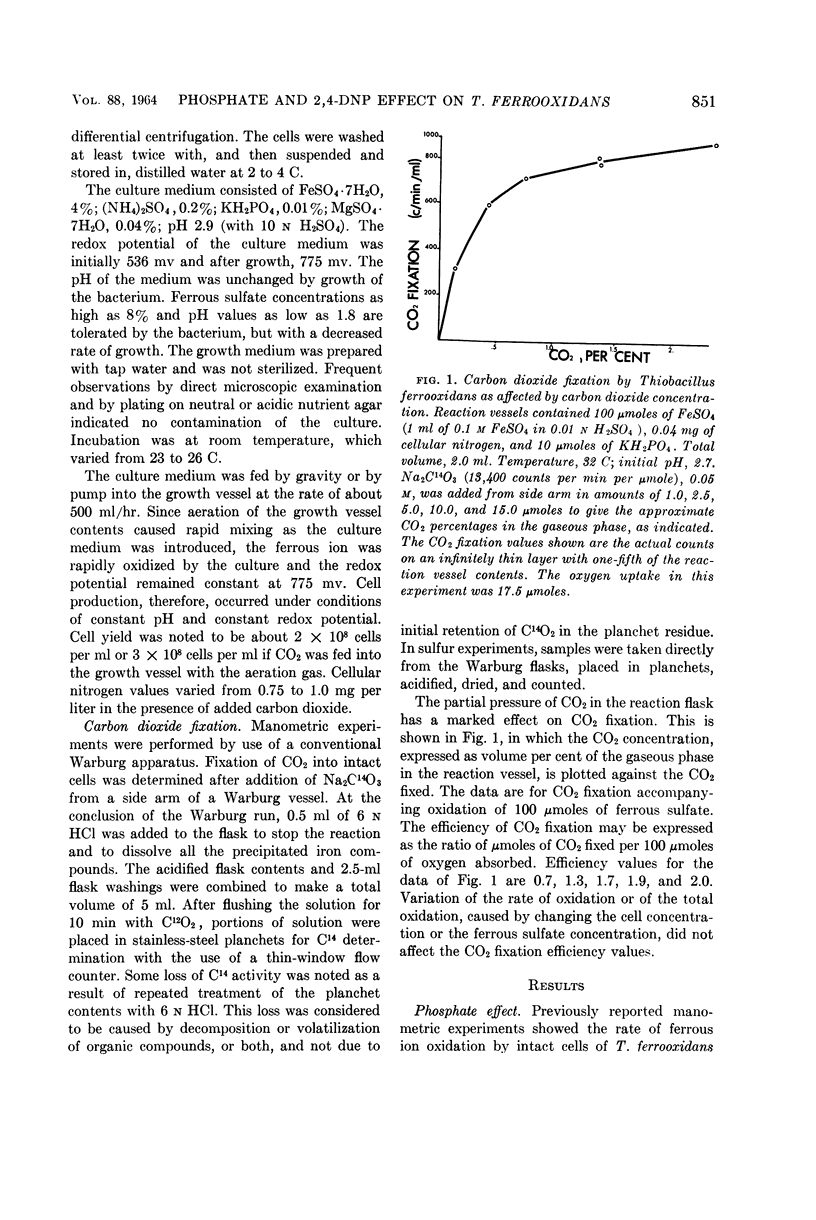
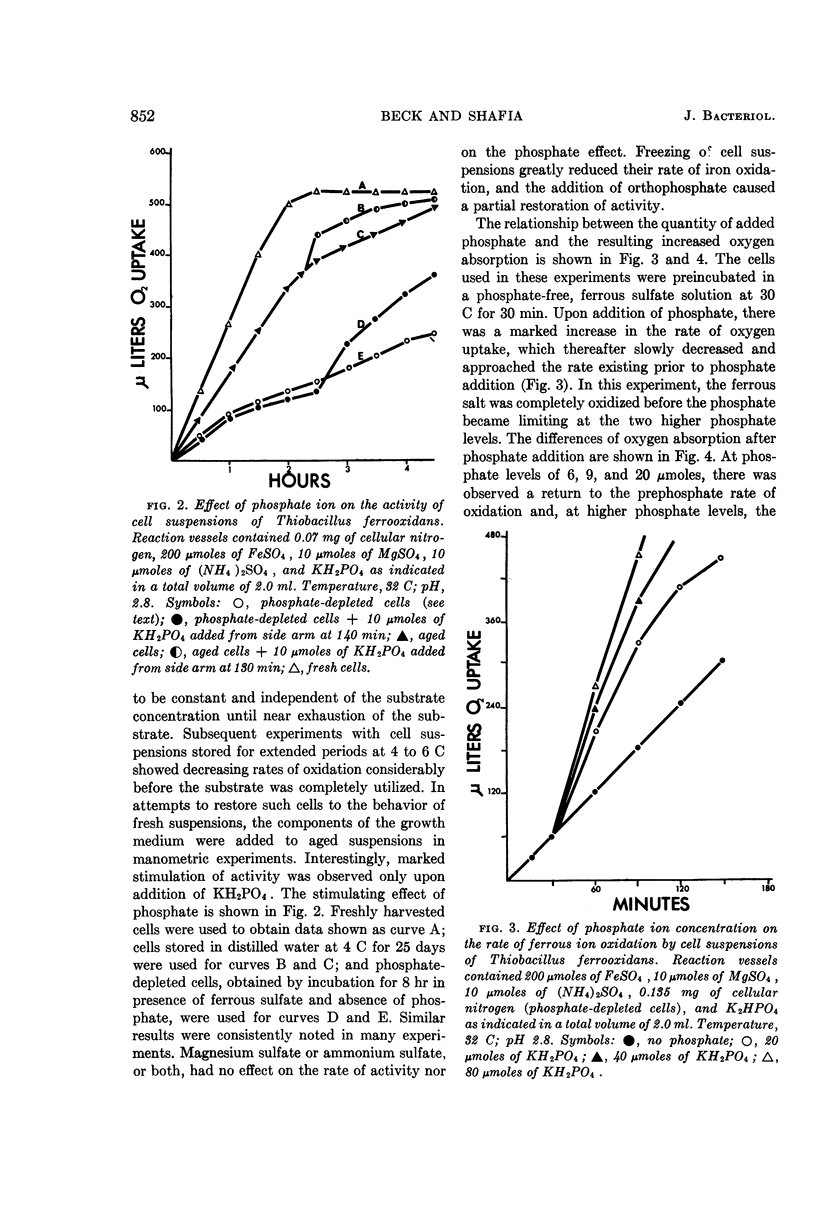

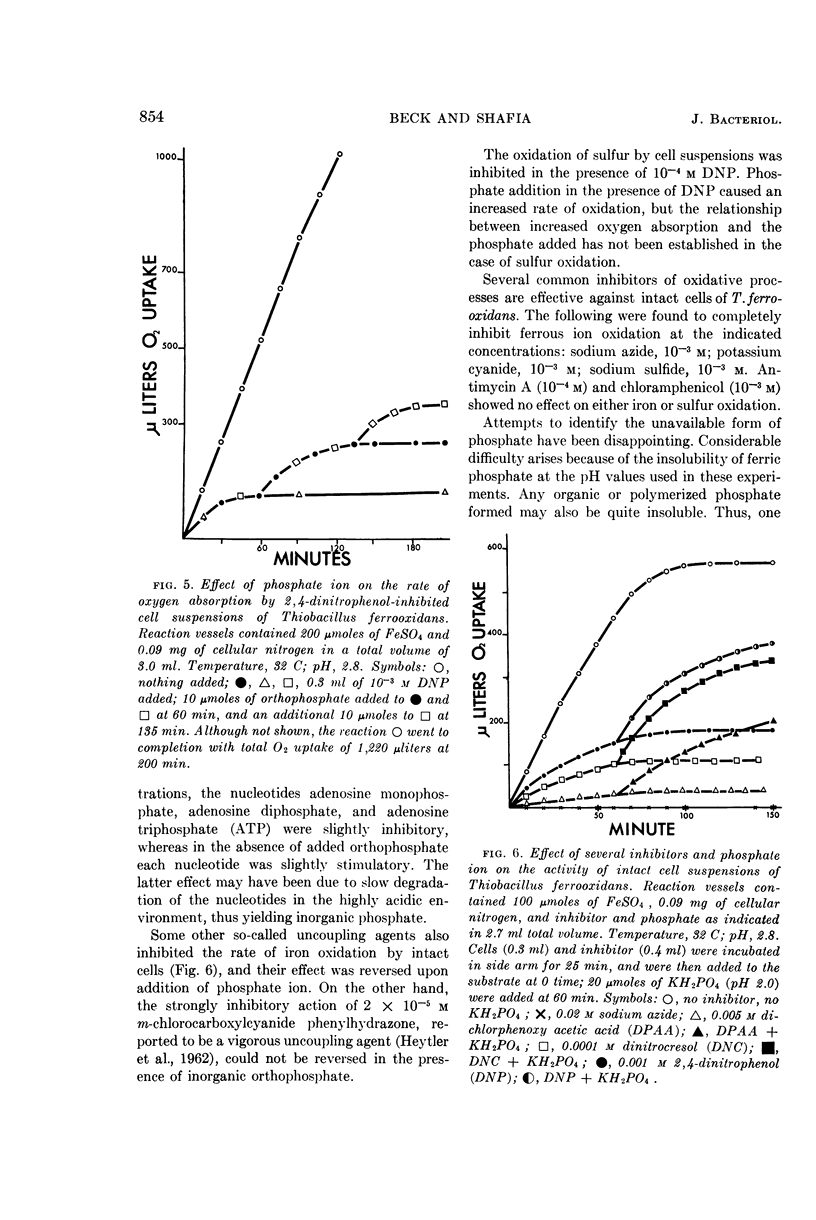
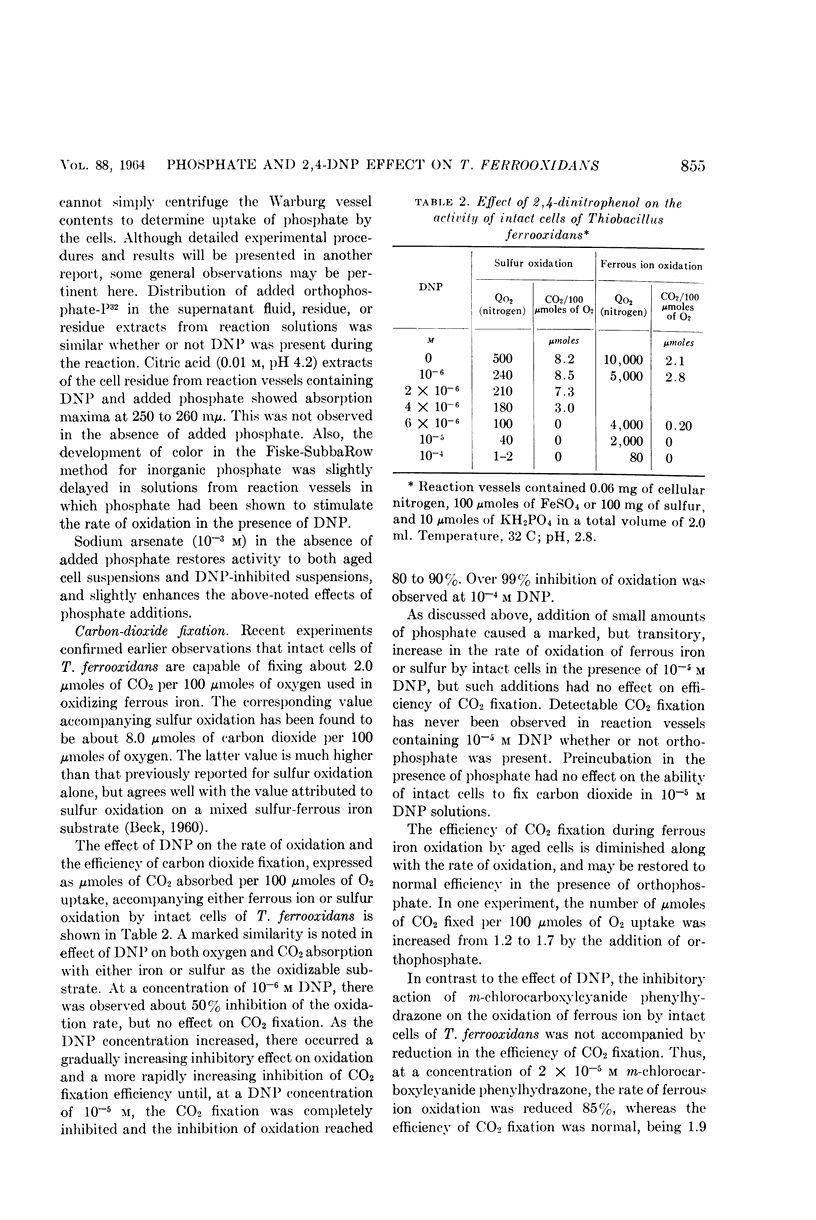

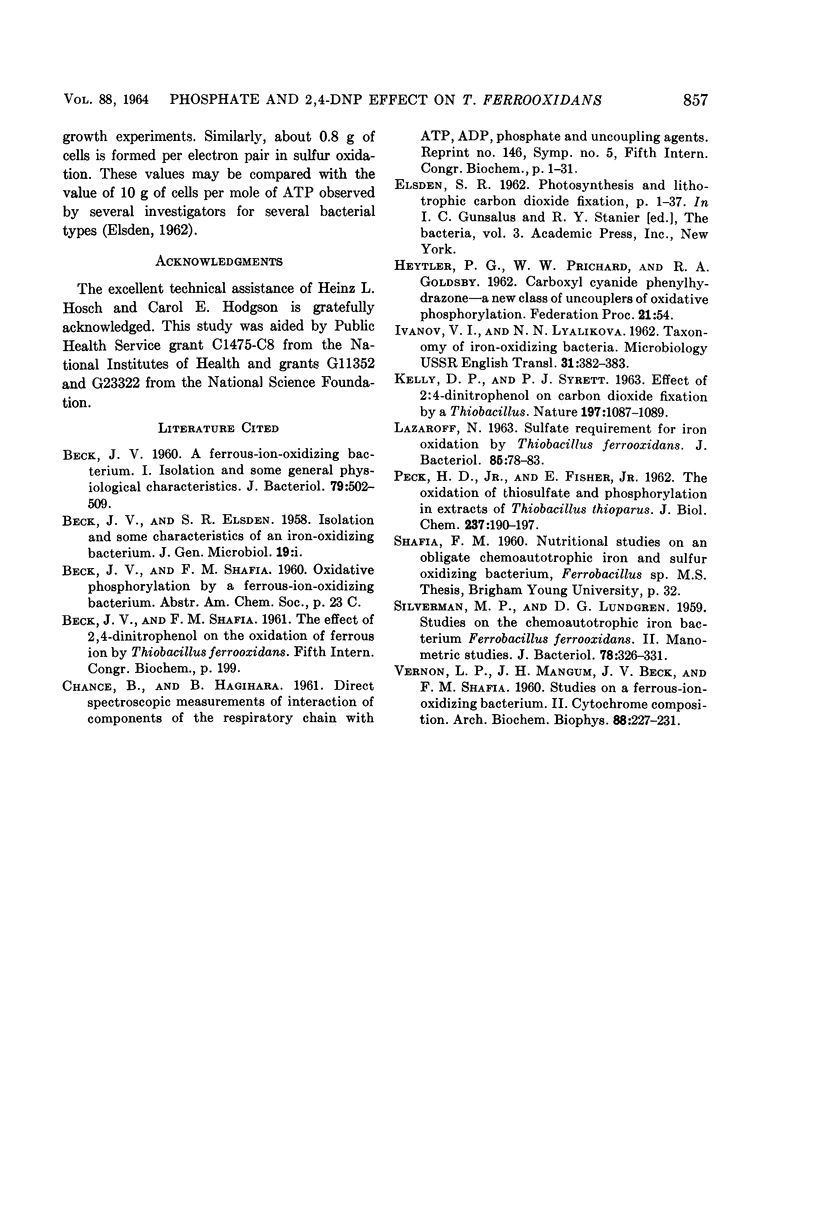
Selected References
These references are in PubMed. This may not be the complete list of references from this article.
- BECK J. V. A ferrous-ion-oxidizing bacterium. I. Isolation and some general physiological characteristics. J Bacteriol. 1960 Apr;79:502–509. doi: 10.1128/jb.79.4.502-509.1960. [DOI] [PMC free article] [PubMed] [Google Scholar]
- Lazaroff N. SULFATE REQUIREMENT FOR IRON OXIDATION BY THIOBACILLUS FERROOXIDANS. J Bacteriol. 1963 Jan;85(1):78–83. doi: 10.1128/jb.85.1.78-83.1963. [DOI] [PMC free article] [PubMed] [Google Scholar]
- PECK H. D., Jr, FISHER E., Jr The oxidation of thiosulfate and phosphorylation in extracts of Thiobacillus thioparus. J Biol Chem. 1962 Jan;237:190–197. [PubMed] [Google Scholar]
- SILVERMAN M. P., LUNDGREN D. G. Studies on the chemoautotrophic iron bacterium Ferrobacillus ferrooxidans. II. Manometric studies. J Bacteriol. 1959 Sep;78:326–331. doi: 10.1128/jb.78.3.326-331.1959. [DOI] [PMC free article] [PubMed] [Google Scholar]
- VERNON L. P., MANGUM J. H., BECK J. V., SHAFIA F. M. Studies on a ferrous-ion-oxidizing bacterium. II. Cytochrome composition. Arch Biochem Biophys. 1960 Jun;88:227–231. doi: 10.1016/0003-9861(60)90227-7. [DOI] [PubMed] [Google Scholar]


